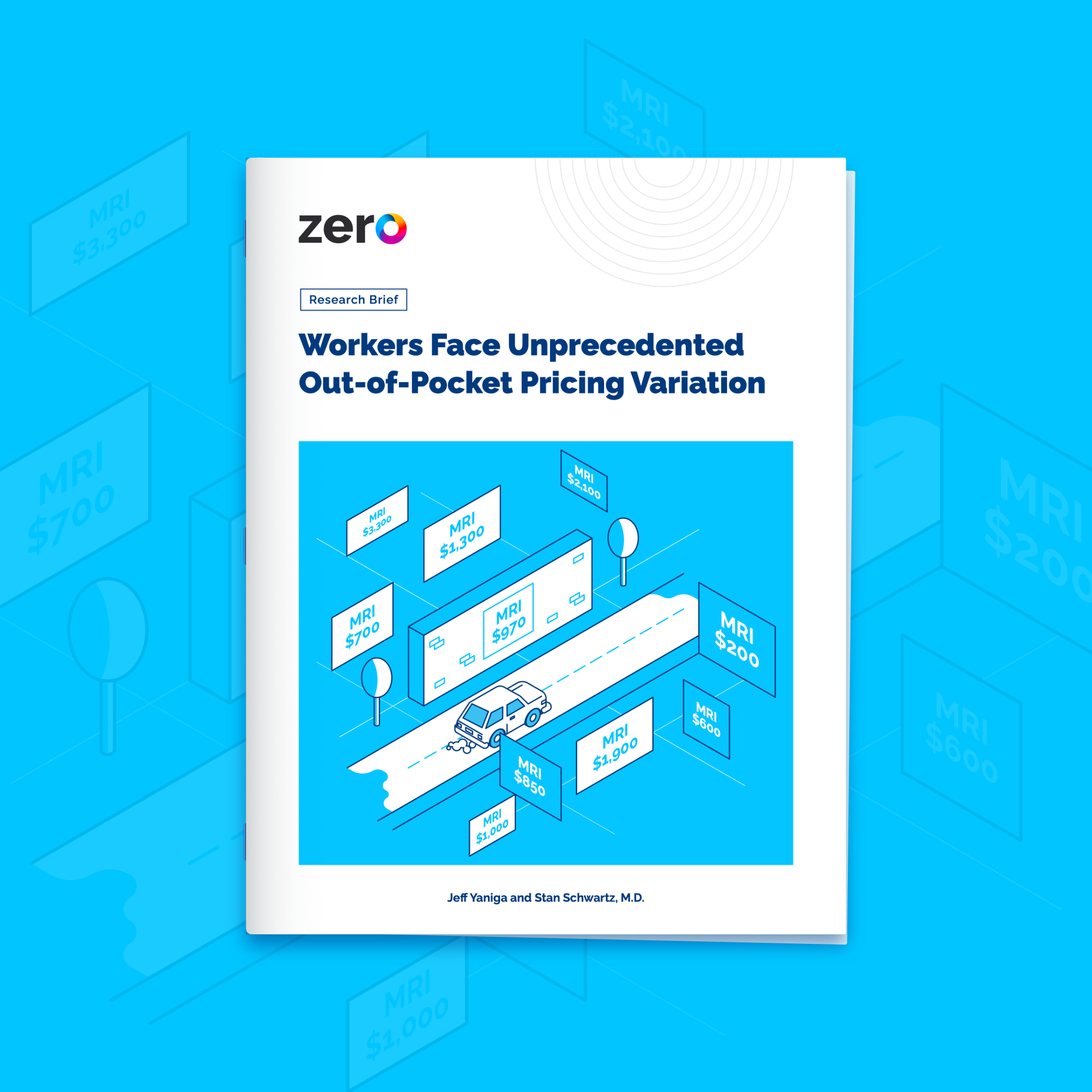Workers Face Unprecedented Out-of-Pocket Pricing Variation
Employer & Advisor MaterialsThis research paper studies a five year period in 10 key cities: Denver, Chicago, Dallas, Tulsa, Oklahoma City, Kansas City, Houston, San Antonio, Austin and Phoenix. The study reviewed 251,159 employees and their dependents over a 5-year period and includes pricing research on over 6,000 common medical procedures that are typically paid out of pocket. For the sake of this study, emergency care is not included and this data focuses on elective care, or care that can be scheduled under the hypothesis that employees have some choice in these care decisions.
Executive Summary and Key Findings
There is wild variation in the pricing for elective medical services within the same state, city and even within the same facilities. Site of service, contracts and payment arrangements can affect price dramatically for similar or exact services.
When it comes to healthcare spending, the larger dollar claims like surgery account for an expected amount of spend. However, smaller claims such as labs and MRIs compete with this total
by adding up very large line items in employer self-funded budgets or household out-of-pocket expenses. These smaller amounts add up and can often be overlooked when thinking about how much our economy spends on health care overall!
Employers and households that act as fiduciaries and spend time researching care, payment and site of service options can eliminate or minimize wasted spend.
Top Five Categories and Impact on Employees
The top five categories of elective spend for these 10 cities are listed below:
| Category | Total Spend | Average Price | Worker Portion(1) |
| Musculoskeletal (MSK) Surgery | $38,240,608 | $9,195 | $1,922 |
| Lab – Pathology | $30,614,038 | $30 | $8 |
| Advanced Imaging – MRI and CT | $26,303,549 | $1,106 | $303 |
| Physical Therapy | $24,158,661 | $136 | $38 |
| Gastroenterology(2) | $11,980,863 | $2,505 | $443 |
Next 5 Categories:
- Surgery – Spine
- Female Genital Surgery
- Cardiovascular – Non-Evasive
- Surgery – General
- Breast
For more details about specific categories, please submit your request at zero.health/research2022
The research team studied pricing variation and volatility for several key procedures in these categories:
| Procedure | Low Price | High Price | Average Price |
| Knee Replacement(3) | $10,390 | $95,155 | $27,205 |
| CT of the Abdomen | $78 | $9,657 | $1,617 |
| Metabolic Blood Panel | $5 | $1,462 | $35 |
On average, employees and their dependents are bearing 20.9% of the costs of these common medical procedures with little to no visibility into this wild pricing variation and volatility. Care decisions at the patient level can mean the difference between hundreds, thousands and possibly even tens of thousands of dollars in out of pocket costs.
The Self-Funded Employer – The Business Impact of this Volatility
In this study, the self funded employer paid 79.1% of the costs associated with these services. Each 1% of variation has a direct cost of $1,536,410 on this set of employers. This does not factor into employee premium rate hikes associated with this inflated pricing.
The average yearly premium has increased 25% since 2015(4). This wild pricing discord has played a key role.
Conclusions and Actionable Insight
- Healthcare is the only business where the price is not broadly advertised to the person paying the bill. For the study above, the self-funded employer on average paid 79.1% of the bill and the member paid 20.9% of the bill.
- The pandemic has led to a postponement of elective care for many. The time is now to encourage your employees to shop for care and to seek preventative care. Two outcomes are possible:
- Pent up demand will lead to a surge in healthcare claims for self-funded employers as employees seek care that was a challenge in 2020 and 2021.
- Preventative care will be ignored and more serious conditions could become more prevalent.
- To affect change, both employer and member stakeholders must own their fiduciary responsibility and research all the options available to them to find care closer to a “fair market price”.
For more information about strategies to help employees find care or to register for an upcoming webinar that discusses this paper in more depth, go to ZERO.health/research2022
(1) Worker Portion – The average amount paid out of pocket by an employee or a dependent of an employee.
(2) Colon, stomach, esophagus, pancreas procedures
(3) Total or partial
(4) https://www.thebalance.com/what-is-the-average-health-insurance-premium-4586358
Get This For Free
Fill out this form to access this free resource.
